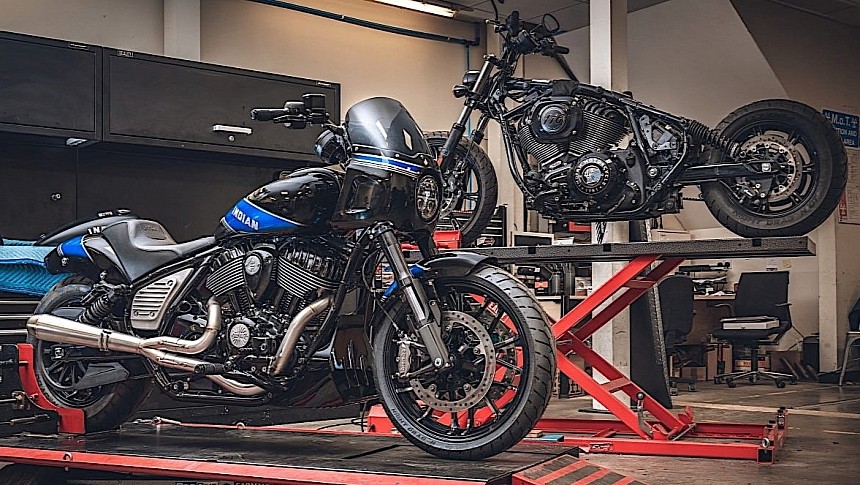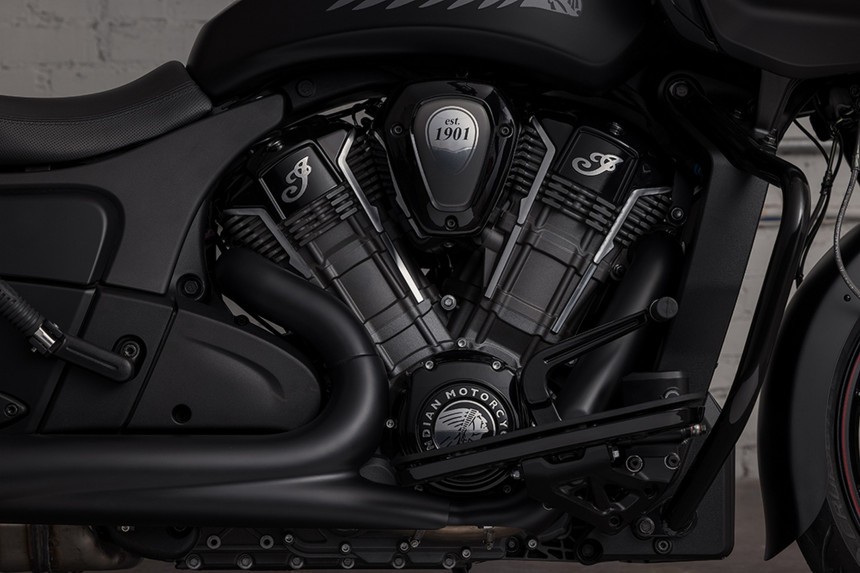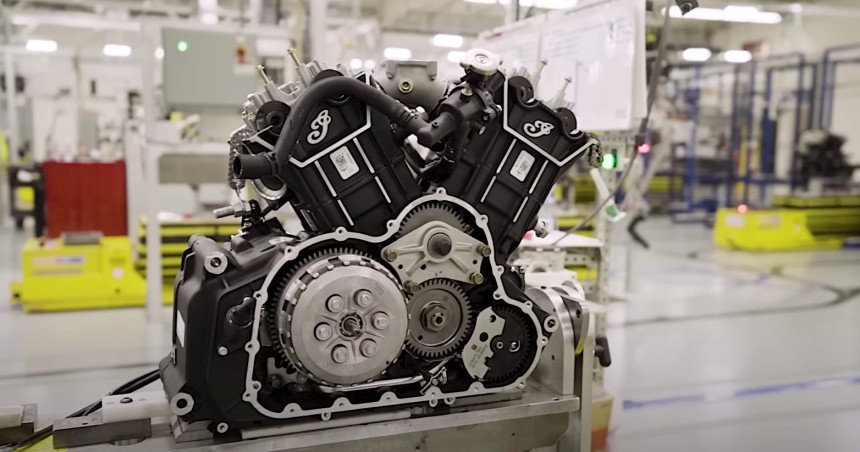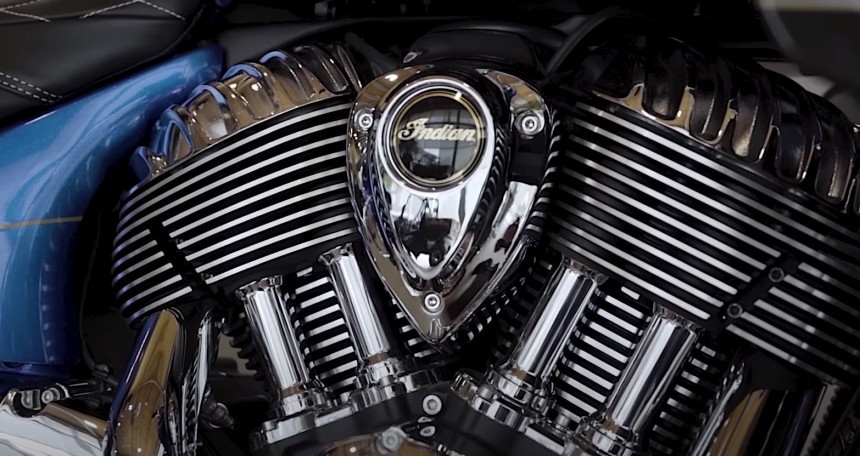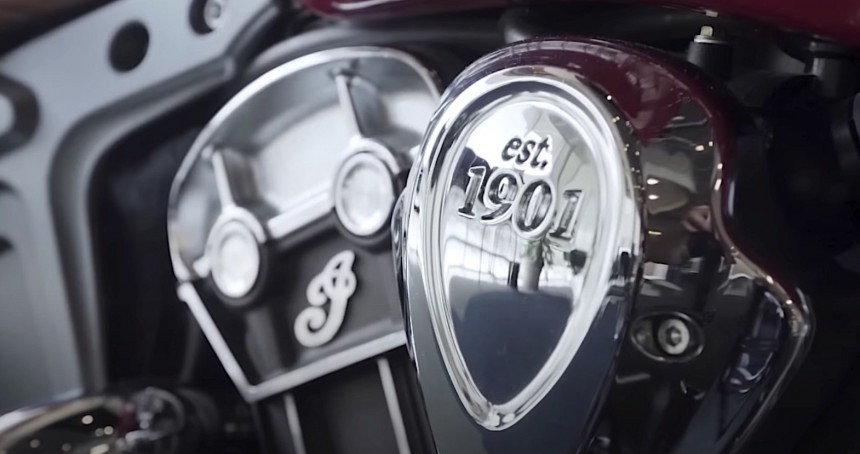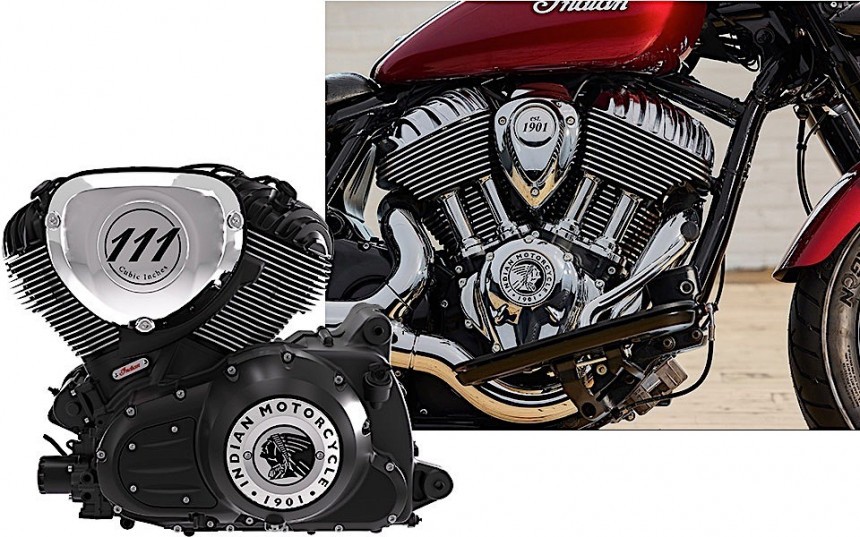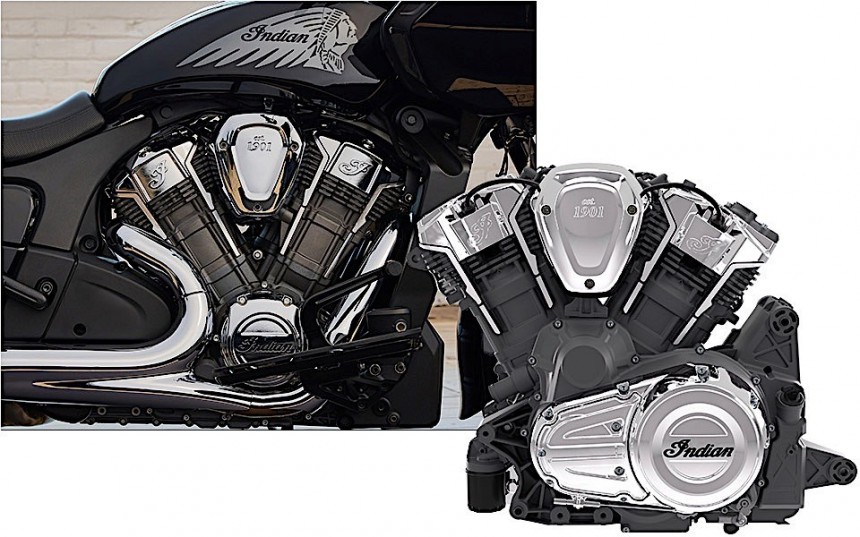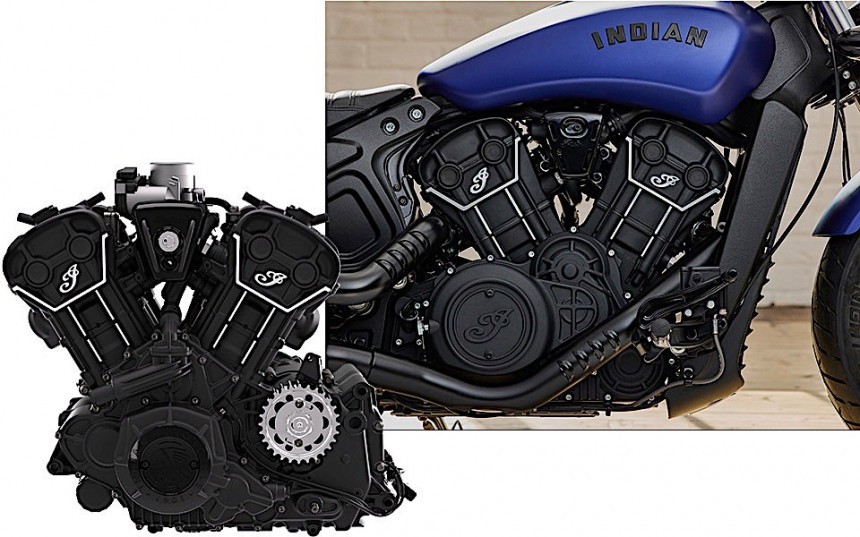Many of the big players in today's automotive industry (meaning both car and motorcycle makers) can trace their roots back to the dawn of the last century, in both Europe and the U.S. On the American continent, like elsewhere, only two of them can proudly call themselves the first in both categories.
In the case of makers of four-wheeled vehicles, the oldest name (that is still active) on the American market is Buick, which was established in 1899. On the two-wheeler front, that name belongs to Indian.
These guys like to call themselves "America's first motorcycle company," and not the oldest, for the simple reason their history is very fragmented, at least compared to that of rival Harley-Davidson's.
Current historians, including those on Indian's payroll, split the company's existence into three major eras: the original one that put the motorcycle maker's name on the map, the tumultuous one that started in 1953, when Indian technically went out of business and many tried to revive it, and the current one, which started once Polaris acquired it in 2011.
An existence with so many ups and downs means that, despite creating some incredible technology over the decades, Indian is a very tough nut to crack when trying to put together a comprehensive list of engines produced over the years. The mission is made even more difficult by the fact that, unlike Harley, Indian and its followers did not go out of their way to give the bike maker's engines their own names and families. At least not not to the extent Harley's people did.
What does that mean? Well, if you've read our Harley-Davidson Engines: Full Timeline and History piece, or are in the slightest interested in motorcycle making history, then you know the Milwaukee company's engines are neatly split into distinct families that follow a natural evolution of technological prowess: the lineage starts with the F-head of the 1910 and 1920s, smoothly burns through a number of other designs, and ends with the modern-day Revolution Max or Screamin' Eagle.
By comparison, Indian seems to have been a lot less careful in preserving a semblance of structure in this respect, so for the most part of its life there are no engine families to talk about, but we're dealing more with an complete motorcycle package.
So we chose to run this piece a little differently: instead of an actual timeline of the engines themselves, like we did with Harley, we will be focusing on the Indian motorcycle engines as they appeared during any of the company's three main eras. Let's dive in.
In fact, that's the reason why Hedstrom, a bicycle racer himself, came on board: design gasoline-powered bikes, not to be used for racing, but for pacing bicycle races. It didn't take long though for the two to see the true potential of such an idea.
The first engine Indian ever made was a single-cylinder one that could only develop close to two horsepower. It appeared in 1901 on a machine that's now known as the Indian Single, and it was enough though to put Hendee on the map and drive sales of its products to the roof. So much so, that these engines began being made under license by a company called Aurora, and even sold to third parties.
The popularity explosion the brand experienced back then was fueled by the fact Hedstrom rode one of these engine bicycles to a new world speed record. It happened in 1903, when he rode his two-wheeler to 56 mph (90 kph). In doing so, the man also won the endurance race held from New York City to Springfield, Massachusetts and back.
The initial engine design evolved, and in 1905 Hendee produced its first V-twin powerplant, effectively making the company the original creator of such an engine design (Harley wouldn't use one until closer to the end of that decade). It was used on a racing bike, Indian's first factory racer, but it would soon spawn a version for daily use that, for all intents and purposes, was America's first production V-twin.
The powerplant was 39ci in displacement (633cc), and configured in a 42-degree V-twin setup that was used on both a street and roadster versions of the Indian motorcycles of that era. The engine helped Indian win all three first places during the 1911 Isle of Man race, and made the company the largest of its kind in the world that decade.
Taking advantage of the success, Indian introduced in 1916 the Powerplus engine, a side-valve V-twin that displaced 61ci (1,000cc), also in a 42-degree setup. The four-stroke unit worked with a three-speed transmission, and was installed in the frame of a motorcycle that would go on to wear the same name (it was alternatively called the Indian Standard). The engine was successful enough to be kept in production until 1924.
Accompanying the Standard in the Indian lineup during that decade were the Model K and its successor, the Model O. The former was powered by single-cylinder two-stroke engines with just 13ci (221cc) in displacement, while the latter was launched as a four-stroke flat-twin-powered machine. These bikes, which would become known as the Lightweights, went out of production in 1919.
Come 1920, Indian let loose into the world a motorcycle model called Scout. To many, it's a family that will forever be the best Indian ever made, and it was initially in production until 1949.
Scouts were originally powered by a side-valve V-twin 37ci (606cc) engine, but the displacement would gradually grow to 45ci (740cc) in 1927, in the same configuration. Later on in the model's life, in 1933, a new Scout model called Pony came with a slightly smaller displacement, 30.5ci (500 cc).
The same decade that gave birth to the Scout saw the arrival of the Chief, the other historically important model for the American bike maker. Made initially from 1922 to 1953, the family relied on a more potent line of four-stroke V-twin engines, with displacements going from 61ci (1,000cc) to 74ci (1,212cc) and even 80ci (1,311cc). The engines are considered the successors of the Powerplus.
Both the Scout and the Chief motorcycles were impressive enough to give rival Harley-Davidson headaches, but that would soon change when the Second World War came. For one reason or another, the American military decided to go with the Milwaukee brand for its war effort needs, and that would spell disaster for Indian.
To fight off the Harley WLA, Indian proposed the Scout model with a 46ci (750cc) engine in its frame, but it proved to be both too heavy and too expensive for what the Army needed. The company then tried its hand with a bunch of experimental Chiefs running the same kind of engine, but this proposal was rejected as well.
When the war ended, only the Chief model remained in Indian's lineup. At least as far as the bikes it made itself went, as it also tried its hand at selling rebadged CZ125b motorcycles made in Europe, and even the Corgi Scooter made in the UK.
The Chief was pulled from the production lines as well in 1949, as attention shifted to making lightweight bikes, namely the so-called Arrow with a 13ci (220cc) engine, and small-displacement Scouts. They didn't prove successful either, and the plug on Indian was officially pulled in 1953, kickstarting a period of incredible struggle for the company. A period Indian itself now calls the…
Starting with 1953 and for the next almost six decades, the Indian name almost didn't matter on the American motorcycle scene. A number of people and organizations tried to keep it afloat with various degrees of success, but none of them really succeeded in coming up with a suitable rival for the behemoth that Harley-Davidson already was.
That's because most of these efforts to keep Indian alive were not necessarily centered on the company producing its own bikes, but tended to use imported and rebranded motorcycles for the task.
The almost six decades of production bikes are divided by the industry's historians into several eras, named after the ones who drove the survival efforts.
First at the helm of the group was English businessman John Brockhouse and his Brockhouse Engineering, who essentially transformed Royal Enfield motorcycles into Indians and sold them as such.
The idea didn't last for long, and in 1960 Indian was sold to Associated Motorcycle Company, who essentially drove it into the ground. Three years later, another business icon of the era, Floyd Clymer, tried again the same British rebranding idea, but his death in 1970 will eventually lead to Indian's demise, once again, seven years later (while under the ownership of Los Angeles attorney Alan Newman).
From 1977 to 1984 Indian belonged to the American Moped Associates and yes, it tried its hand at selling Honda-based mopeds manufactured in Taiwan. The Derbi group would then take over, and the focus once again shifted, this time on making go-carts.
From 1984 to 1998, the name Indian completely disappeared from the motorcycle making scene. It would come back in the late 1990s as the Indian Motorcycle Company of America (IMCA), and it tried to revive the name by making modified versions of the earlier Scouts and Chiefs. The magic didn't last long this time either, and IMCA went out of business in 2003.
Then the reigns passed over to London-based private equity firm Stellican, which even tried its hand at making a few motorcycles before the brand eventually passed over to Polaris.
During the 57 years that have passed since Indian's initial demise and the Polaris takeover, the brand produced not a single new engine on its own.
Since that time, the brand has known a meteoric rise, if there ever was such a thing, with a revival of the iconic names from the company's past in terms of both motorcycle models and the engines that power them. So much so that at the time of writing Indian is making no less than six engines that power its many modern-day models, part of four distinct families.
Two years after it took over Indian, in 2013, Polaris had a manufacturing facilities up and running in Minnesota and Iowa, and that meant it needed products. On the engine front, the first such product the company ever made was the Thunderstroke, a classic V-twin powerplant that was meant to pull forward "iconic elements from past Indian Motorcycles."
The original engine had a displacement of 111ci (1,819cc), was air-cooled, and cranked out 119 ft-lbs of torque. It was (and in some cases still is) available on several Indian models, including Chieftain, Indian Springfield, Chief, Chief Bobber, and Super Chief.
Six years after the first Thunderstroke was born, in 2019, a larger, 116ci (1,900cc) variant came to the market. It too an air-cooled V-twin, it uses high-flow cylinder heads to take torque levels to 126 ft-lbs of torque, a "class-leading" value according to Indian itself.
The Thunderstroke 116 engine is available on most of the bike makers' important models, including some variants of the Springfield, Chieftain, Roadmaster, and Chief.
At the same time the 116ci version of the Thunderstroke was born, in 2019, Indian brought back an iconic engine name from its past: the Powerplus. Initially a side-valve V-twin that displaced 61ci, the Powerplus morphed into Indian's "most powerful engine ever built."
The hardware is a liquid-cooled V-tin that displaces 108ci (1,770cc), and cranks out a total of 128 ft-lbs of torque. It tops that with a total horsepower value of 122, controlled by means of a six-speed transmission.
Because of its high performance the engine is not meant for all the bikes Indian is currently making and selling. As such, it is offered on the highly exclusive and very expensive Challenger and Pursuit lines of motorcycles.
Scout is not only the name of a historically important model in the Indian lineup, but also that of an engine. With a history dating back almost 100 years, there was no way Polaris was going to ignore it.
Back in 2015, two years after it released the Thunderstroke, Indian unleashed the new Scout engine called Sixty, a liquid-cooled 60ci (983cc) V-twin that is rated at 78 horsepower (at the top of its class in this respect) and 65 ft-lbs of torque. The powerplant comes with electronic fuel injection, and a five-speed transmission.
At the same time, the Scout engine family was enlarged with the introduction of another version that displaced 69ci (1,131cc). This variant spits out a nice, round 100 horsepower and 72 ft-lbs of torque. This one was designed to work with a six-speed transmission.
In the present-day lineup of the bike maker, the Scout Sixty powers three motorcycles, namely the Scout Sixty, Scout Bobber Sixty, Scout Rogue Sixty, while the larger variant is deployed on the Scout, Scout Bobber, Scout Rogue, and Scout Bobber Twenty.
It too a V-twin by trade, the FTR is a liquid-cooled 73ci (1,203cc) unit with 120 horsepower on tap, and torque levels rated at 87 ft-lbs.
In the purest Indian tradition, the FTR engine powers a line of motorcycles called exactly like that, FTR.
These guys like to call themselves "America's first motorcycle company," and not the oldest, for the simple reason their history is very fragmented, at least compared to that of rival Harley-Davidson's.
Current historians, including those on Indian's payroll, split the company's existence into three major eras: the original one that put the motorcycle maker's name on the map, the tumultuous one that started in 1953, when Indian technically went out of business and many tried to revive it, and the current one, which started once Polaris acquired it in 2011.
An existence with so many ups and downs means that, despite creating some incredible technology over the decades, Indian is a very tough nut to crack when trying to put together a comprehensive list of engines produced over the years. The mission is made even more difficult by the fact that, unlike Harley, Indian and its followers did not go out of their way to give the bike maker's engines their own names and families. At least not not to the extent Harley's people did.
What does that mean? Well, if you've read our Harley-Davidson Engines: Full Timeline and History piece, or are in the slightest interested in motorcycle making history, then you know the Milwaukee company's engines are neatly split into distinct families that follow a natural evolution of technological prowess: the lineage starts with the F-head of the 1910 and 1920s, smoothly burns through a number of other designs, and ends with the modern-day Revolution Max or Screamin' Eagle.
By comparison, Indian seems to have been a lot less careful in preserving a semblance of structure in this respect, so for the most part of its life there are no engine families to talk about, but we're dealing more with an complete motorcycle package.
The engines that made Indian legendary (1897 - 1952)
Indian came to be as the Hendee Manufacturing Company in 1897, a company whose main purpose was to assemble and sell bicycles. Its founder, George M. Hendee, was naturally trying to take advantage of the increasing appetite Americans had for this means of transportation, but, with the help of Oscar Hedstrom, who joined the company in 1900, saw that there could be better ways to move about on to wheels: by slapping an engine in the frame.In fact, that's the reason why Hedstrom, a bicycle racer himself, came on board: design gasoline-powered bikes, not to be used for racing, but for pacing bicycle races. It didn't take long though for the two to see the true potential of such an idea.
The first engine Indian ever made was a single-cylinder one that could only develop close to two horsepower. It appeared in 1901 on a machine that's now known as the Indian Single, and it was enough though to put Hendee on the map and drive sales of its products to the roof. So much so, that these engines began being made under license by a company called Aurora, and even sold to third parties.
The popularity explosion the brand experienced back then was fueled by the fact Hedstrom rode one of these engine bicycles to a new world speed record. It happened in 1903, when he rode his two-wheeler to 56 mph (90 kph). In doing so, the man also won the endurance race held from New York City to Springfield, Massachusetts and back.
The initial engine design evolved, and in 1905 Hendee produced its first V-twin powerplant, effectively making the company the original creator of such an engine design (Harley wouldn't use one until closer to the end of that decade). It was used on a racing bike, Indian's first factory racer, but it would soon spawn a version for daily use that, for all intents and purposes, was America's first production V-twin.
Taking advantage of the success, Indian introduced in 1916 the Powerplus engine, a side-valve V-twin that displaced 61ci (1,000cc), also in a 42-degree setup. The four-stroke unit worked with a three-speed transmission, and was installed in the frame of a motorcycle that would go on to wear the same name (it was alternatively called the Indian Standard). The engine was successful enough to be kept in production until 1924.
Accompanying the Standard in the Indian lineup during that decade were the Model K and its successor, the Model O. The former was powered by single-cylinder two-stroke engines with just 13ci (221cc) in displacement, while the latter was launched as a four-stroke flat-twin-powered machine. These bikes, which would become known as the Lightweights, went out of production in 1919.
Come 1920, Indian let loose into the world a motorcycle model called Scout. To many, it's a family that will forever be the best Indian ever made, and it was initially in production until 1949.
Scouts were originally powered by a side-valve V-twin 37ci (606cc) engine, but the displacement would gradually grow to 45ci (740cc) in 1927, in the same configuration. Later on in the model's life, in 1933, a new Scout model called Pony came with a slightly smaller displacement, 30.5ci (500 cc).
Both the Scout and the Chief motorcycles were impressive enough to give rival Harley-Davidson headaches, but that would soon change when the Second World War came. For one reason or another, the American military decided to go with the Milwaukee brand for its war effort needs, and that would spell disaster for Indian.
To fight off the Harley WLA, Indian proposed the Scout model with a 46ci (750cc) engine in its frame, but it proved to be both too heavy and too expensive for what the Army needed. The company then tried its hand with a bunch of experimental Chiefs running the same kind of engine, but this proposal was rejected as well.
When the war ended, only the Chief model remained in Indian's lineup. At least as far as the bikes it made itself went, as it also tried its hand at selling rebadged CZ125b motorcycles made in Europe, and even the Corgi Scooter made in the UK.
The Chief was pulled from the production lines as well in 1949, as attention shifted to making lightweight bikes, namely the so-called Arrow with a 13ci (220cc) engine, and small-displacement Scouts. They didn't prove successful either, and the plug on Indian was officially pulled in 1953, kickstarting a period of incredible struggle for the company. A period Indian itself now calls the…
Tumultuous times and the fight for survival (1953 - 2010)
That's because most of these efforts to keep Indian alive were not necessarily centered on the company producing its own bikes, but tended to use imported and rebranded motorcycles for the task.
The almost six decades of production bikes are divided by the industry's historians into several eras, named after the ones who drove the survival efforts.
First at the helm of the group was English businessman John Brockhouse and his Brockhouse Engineering, who essentially transformed Royal Enfield motorcycles into Indians and sold them as such.
The idea didn't last for long, and in 1960 Indian was sold to Associated Motorcycle Company, who essentially drove it into the ground. Three years later, another business icon of the era, Floyd Clymer, tried again the same British rebranding idea, but his death in 1970 will eventually lead to Indian's demise, once again, seven years later (while under the ownership of Los Angeles attorney Alan Newman).
From 1977 to 1984 Indian belonged to the American Moped Associates and yes, it tried its hand at selling Honda-based mopeds manufactured in Taiwan. The Derbi group would then take over, and the focus once again shifted, this time on making go-carts.
Then the reigns passed over to London-based private equity firm Stellican, which even tried its hand at making a few motorcycles before the brand eventually passed over to Polaris.
During the 57 years that have passed since Indian's initial demise and the Polaris takeover, the brand produced not a single new engine on its own.
The engines of the Indian revival era (2011 - present)
Polaris has always dreamed of making motorcycles, and since the easiest way to do that was to create its own brand, it birthed Victory. The brand was born at about the same time IMCA came into this world, and was around until Polaris decided to take over Indian from Stellican in 2011.Since that time, the brand has known a meteoric rise, if there ever was such a thing, with a revival of the iconic names from the company's past in terms of both motorcycle models and the engines that power them. So much so that at the time of writing Indian is making no less than six engines that power its many modern-day models, part of four distinct families.
The Thunderstroke engine (2013 - present)
The original engine had a displacement of 111ci (1,819cc), was air-cooled, and cranked out 119 ft-lbs of torque. It was (and in some cases still is) available on several Indian models, including Chieftain, Indian Springfield, Chief, Chief Bobber, and Super Chief.
Six years after the first Thunderstroke was born, in 2019, a larger, 116ci (1,900cc) variant came to the market. It too an air-cooled V-twin, it uses high-flow cylinder heads to take torque levels to 126 ft-lbs of torque, a "class-leading" value according to Indian itself.
The Thunderstroke 116 engine is available on most of the bike makers' important models, including some variants of the Springfield, Chieftain, Roadmaster, and Chief.
The Powerplus engine (2019 - present)
The hardware is a liquid-cooled V-tin that displaces 108ci (1,770cc), and cranks out a total of 128 ft-lbs of torque. It tops that with a total horsepower value of 122, controlled by means of a six-speed transmission.
Because of its high performance the engine is not meant for all the bikes Indian is currently making and selling. As such, it is offered on the highly exclusive and very expensive Challenger and Pursuit lines of motorcycles.
The Scout engine (2015-present)
Back in 2015, two years after it released the Thunderstroke, Indian unleashed the new Scout engine called Sixty, a liquid-cooled 60ci (983cc) V-twin that is rated at 78 horsepower (at the top of its class in this respect) and 65 ft-lbs of torque. The powerplant comes with electronic fuel injection, and a five-speed transmission.
At the same time, the Scout engine family was enlarged with the introduction of another version that displaced 69ci (1,131cc). This variant spits out a nice, round 100 horsepower and 72 ft-lbs of torque. This one was designed to work with a six-speed transmission.
In the present-day lineup of the bike maker, the Scout Sixty powers three motorcycles, namely the Scout Sixty, Scout Bobber Sixty, Scout Rogue Sixty, while the larger variant is deployed on the Scout, Scout Bobber, Scout Rogue, and Scout Bobber Twenty.
The FTR engine (2018 - present)
Last but not least on in the lineup of Indian engines in the modern era is the FTR. It's also the youngest, having been introduced just five short years ago.It too a V-twin by trade, the FTR is a liquid-cooled 73ci (1,203cc) unit with 120 horsepower on tap, and torque levels rated at 87 ft-lbs.
In the purest Indian tradition, the FTR engine powers a line of motorcycles called exactly like that, FTR.
